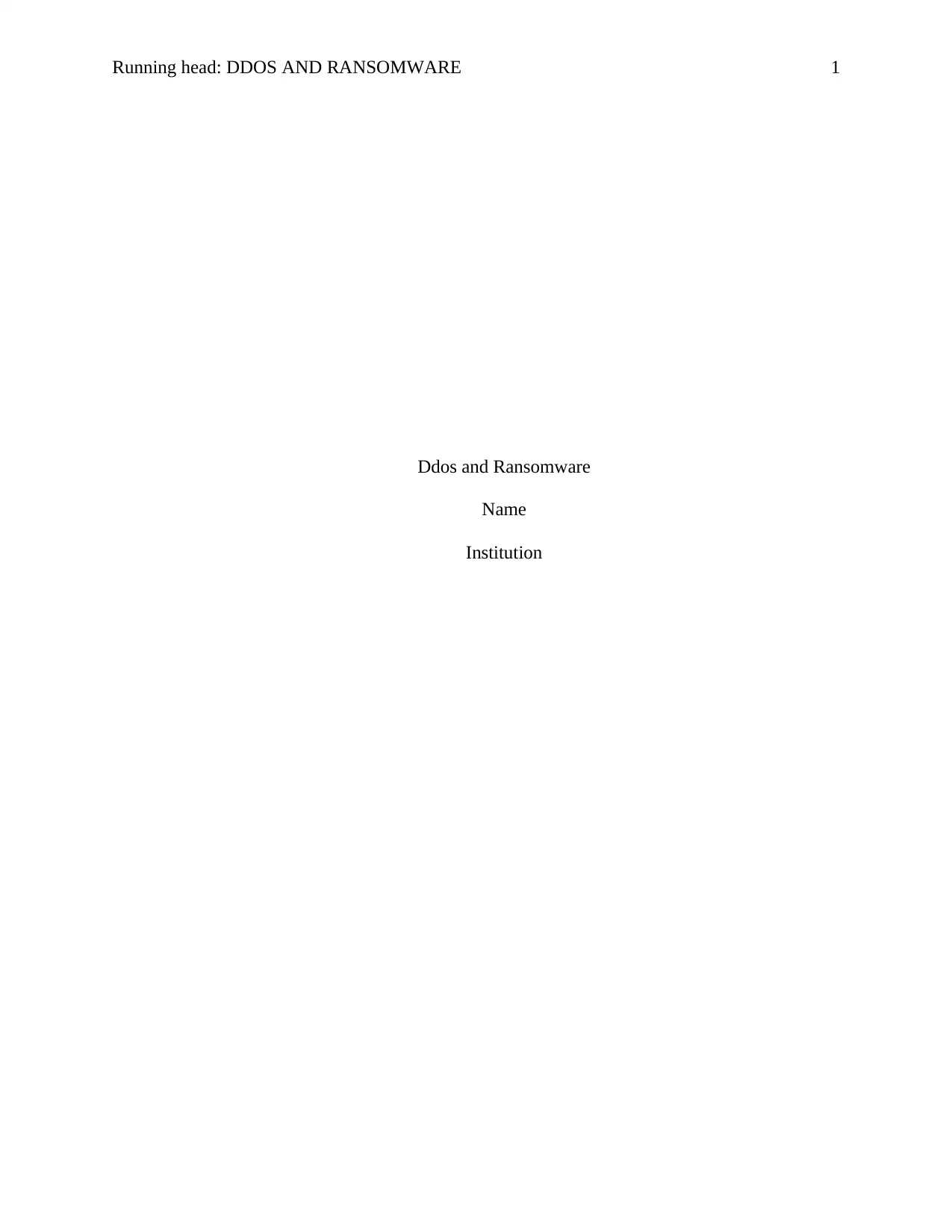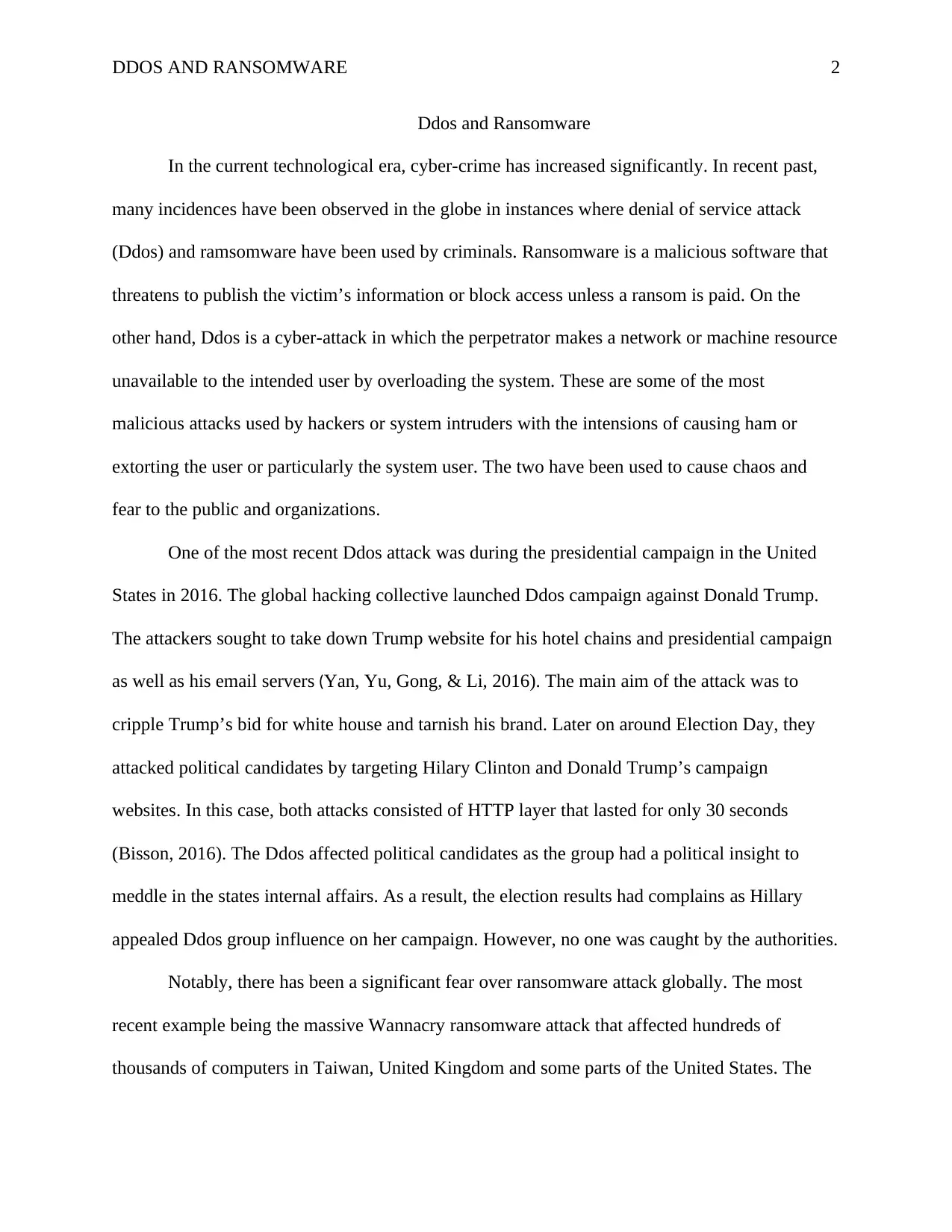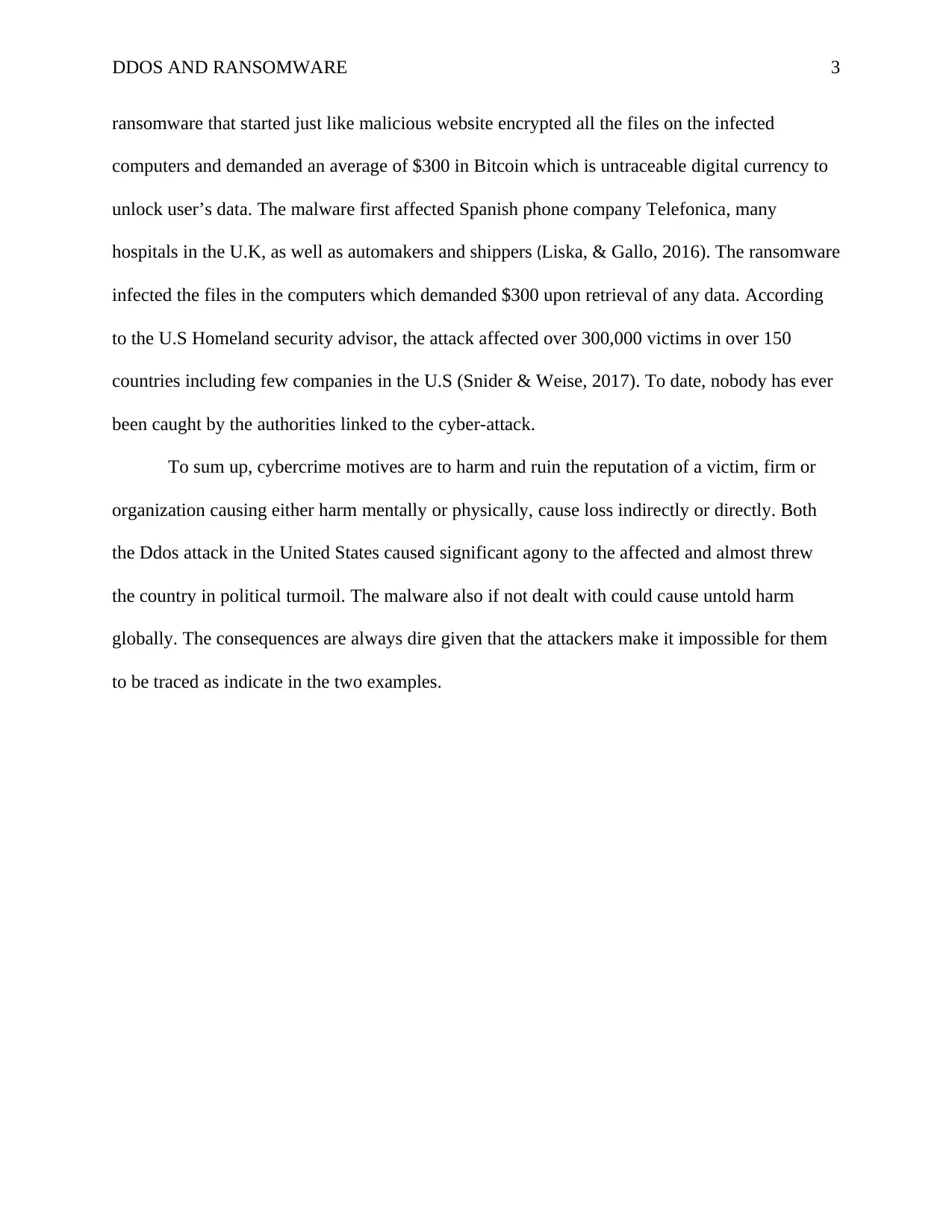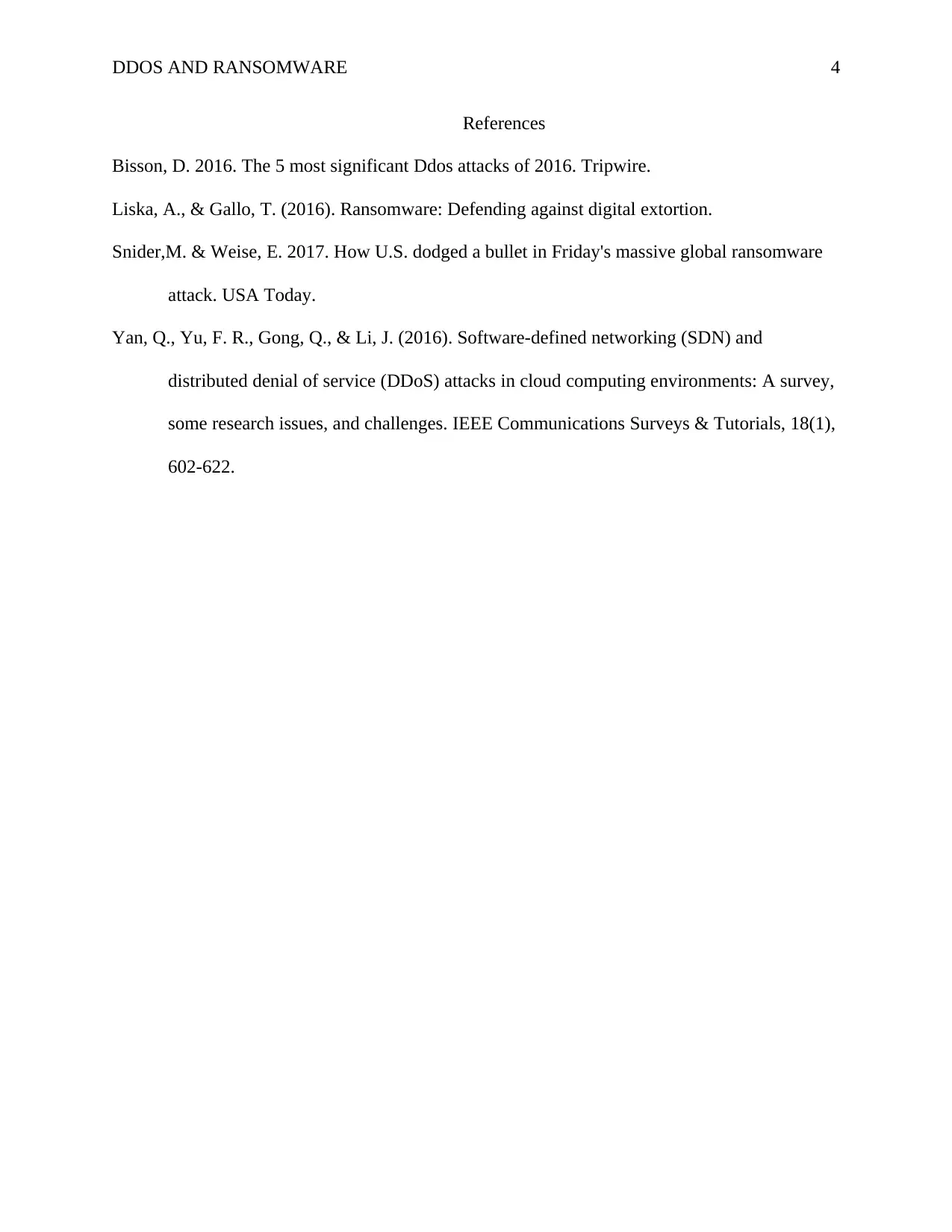Cybersecurity Report: Analysis of DDOS and Ransomware Threats
VerifiedAdded on 2023/06/10
|4
|739
|285
Report
AI Summary
This report provides an analysis of Distributed Denial of Service (DDOS) and ransomware attacks, two significant cyber threats. It explores the nature of these attacks, including the methods used by perpetrators and the impact on victims. The report highlights real-world examples such as the DDOS attacks during the 2016 US presidential campaign and the global Wannacry ransomware attack, detailing the consequences and the challenges in tracing the attackers. It emphasizes the motives behind cybercrimes, such as causing harm, disrupting services, and extorting money. The analysis underscores the importance of understanding these threats to improve cybersecurity measures and protect against future attacks. The report also references relevant literature to support the findings and conclusions regarding the nature and impact of cyberattacks.
1 out of 4








![[object Object]](/_next/static/media/star-bottom.7253800d.svg)